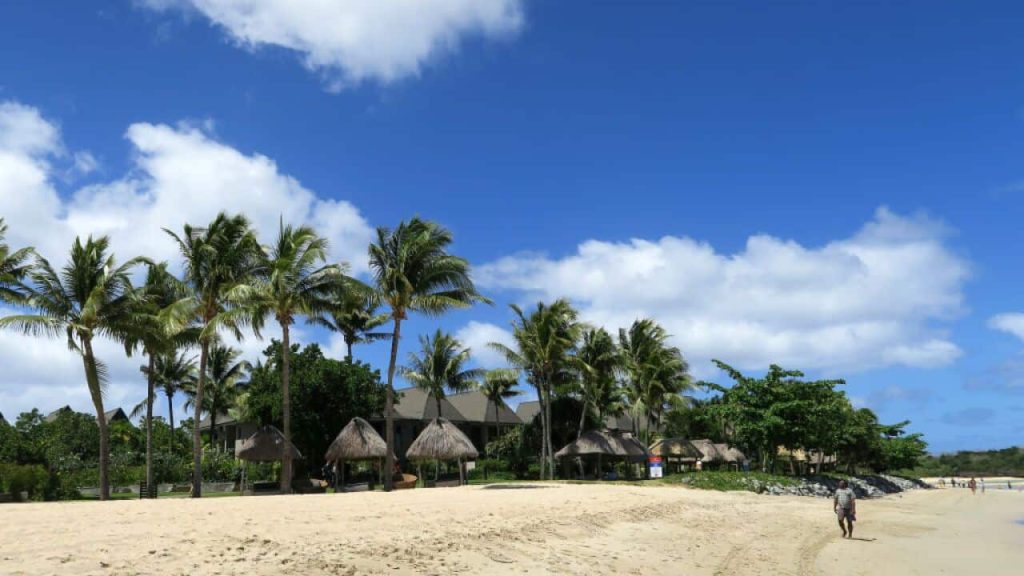The Impending Threat of Tropical Cyclones on Pacific Holiday Travel
Planning a vacation in the Pacific this summer? Beware, as your trip may be impacted by the looming threat of tropical cyclones in the region. The Pacific cyclone season typically occurs between November and March, with the Bureau of Meteorology (BoM) forecasting an average of 10 tropical cyclones to form this season. This warning was reiterated in an alert published on the Department of Foreign Affairs and Trade’s Smartraveller website, especially cautioning travelers during the busy December and January school holidays.
Expert Insights on the Situation
Steve Turton, an adjunct professor in environmental science at Central Queensland University and a seasoned researcher on tropical cyclones, emphasized the importance of vigilance for travelers venturing into cyclone-prone areas during the holiday season. He highlighted the BoM’s forecast of an active tropical cyclone system, particularly affecting popular destinations for Australian families during the school holidays.
What to Expect in the Pacific Cyclone Season
According to the BoM’s annual tropical cyclone outlook, the eastern Pacific region is predicted to experience around six tropical cyclones, while the western region may see four cyclones, aligning closely with the average figures. The forecast warns of a higher likelihood of severe tropical cyclones due to warmer ocean temperatures in the South Pacific, with the risk of storm surges escalating as sea levels rise.
Tropical cyclones can have far-reaching impacts, affecting Pacific Islands and coastal regions even when they remain offshore. Additionally, tropical lows that do not develop into cyclones can still bring damaging winds, heavy rainfall, and flooding to the region.
Potentially Affected Pacific Regions
Popular tourist destinations in the South Pacific, such as the Solomon Islands, Vanuatu, Fiji, New Caledonia, Cook Islands, Tonga, and Samoa, are susceptible to tropical cyclones. However, the vulnerability of these nations varies based on their level of infrastructure development and preparedness for the cyclone season.
Preparation Tips for Travelers
For travelers in the Pacific during the cyclone season, the Smartraveller alert advises staying informed about local safety protocols. This includes monitoring local media and weather updates, accessing Smartraveller advice for the destination, and subscribing to travel advisories. It is also recommended to share accommodation and contact details with loved ones and ensure that travel insurance covers claims related to cyclones.
- Stay updated with local news for weather alerts.
- Follow the instructions of local authorities diligently.
- Identify nearby shelters for safety.
- Return to the mainland if you are on an island before boat services are suspended.
- Carry essentials like water, non-perishable food, first aid kit, radio, and flashlight.
- Withdraw cash from ATMs for emergencies.
- Keep your travel documents secure and waterproof.
- Regularly update friends and family about your situation.
Conclusion
With the Pacific cyclone season underway, travelers must exercise caution and preparedness to navigate potential weather disruptions during their holidays. By staying informed, following safety guidelines, and taking necessary precautions, tourists can mitigate risks and ensure a safer travel experience in cyclone-prone regions.
FAQs
What is the Pacific cyclone season timeframe?
The Pacific cyclone season typically occurs between November and March, with peak activity often seen in December and January.
Which Pacific regions are most vulnerable to tropical cyclones?
Popular tourist destinations like the Solomon Islands, Vanuatu, Fiji, New Caledonia, Cook Islands, Tonga, and Samoa are among the regions most susceptible to tropical cyclones in the Pacific.

